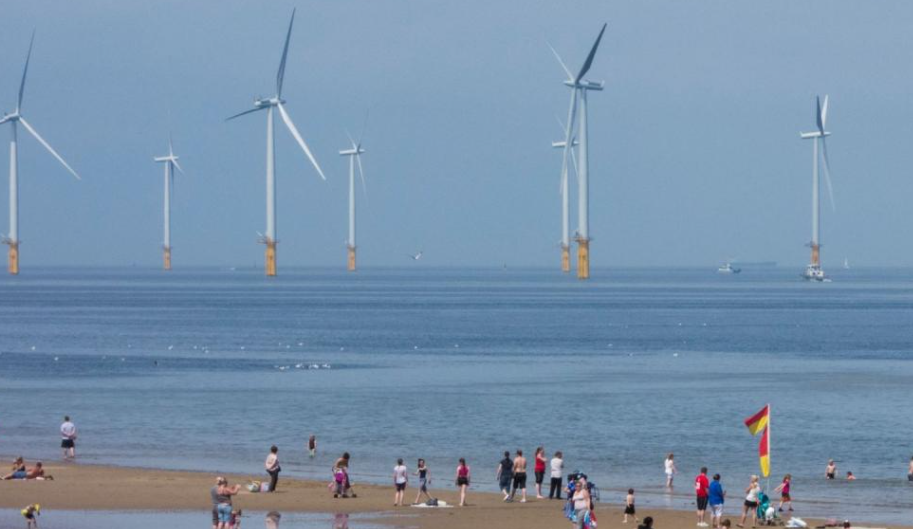Portside Wave Energy—the Dark Horse of the Renewable Energy Future

By 2050, ocean-based solutions could deliver up to 35 percent of the annual greenhouse gas emissions reductions needed to limit global warming to 1.5 degrees Celsius. There are seven key blue economy climate solutions that are primed for widespread implementation, and scaling marine renewable energy sources tops the list.
Offshore wind and solar often dominate discussions about ocean-based renewable energy, but the nascent industries of wave and tidal energy also offer promising possibilities. The Energy Information Administration has estimated that, if fully harnessed, the waves off America’s shores could generate the equivalent of 63 percent of the electricity the U.S. produced in 2019.
One of the main advantages that wave and tidal energy have over other renewable energy sources is consistency. Weather conditions—like overcast skies or lack of wind—can affect the generation of wind and solar. But tides—and the waves they produce—are produced daily by the gravitational pull of the moon. Because they are independent from Earth’s weather systems, they are also resilient against global warming-induced changes in weather patterns.
Despite these advantages, wave and tidal energy have yet to be utilized at scale. Tidal energy has significant drawbacks that have hindered its widespread adaptation, including high construction costs and the environmental impact of tidal facilities’ underwater turbines. Wave power has its own set of challenges, as exemplified by the nation’s first offshore wave energy testing facility in Oregon, which struggled to move forward amidst a decade-long regulatory process, engineering difficulties, and a construction sticker price of $80 million.
However, onshore wave power facilities are proving to be capable of circumventing the financial barriers and construction challenges that have hindered both offshore wave energy and tidal energy. This year, Eco Wave power went from obtaining final permitting approval from the Port of Los Angeles to debuting America’s first onshore wave power project within a six-month time frame. The startup installed an onshore wave power demonstration at AltaSea at the Port of Los Angeles, attaching power-generating floaters to an existing concrete wharf.
By installing a wave power demonstration onto existing port infrastructure and working with a mix of public and private funding partners, Eco Wave avoided many of the aforementioned challenges. And Eco Wave’s utilization of preexisting structures in an industrial port means no new habitat degradation and no obstruction of California’s iconic coastline.
In addition to the climate benefits, portside wave energy could also have important public safety implications. Access to an energy supply that isn’t affected by fire or earthquakes could make the Port of Los Angeles an optimal emergency shelter and evacuation zone for natural disaster-prone Southern California.
If Eco Wave’s proof-of-concept project at AltaSea is successful, the plan is to expand wave generation across the Port of Los Angeles’ breakwater. Such a full-scale installation could generate enough energy to power over 60,000 homes. This pioneering project could become a model for other ports to follow, harkening in an era of portside wave energy.
Written by Emily Vidovich. Emily is an environmental journalist specializing in ocean conservation and climate change mitigation. She obtained her bachelor’s degree at George Washington University and a Masters in Global Environmental Studies at a university in Tokyo, Japan. Born and raised in the Port of Los Angeles, she now works in research and communications at AltaSea.